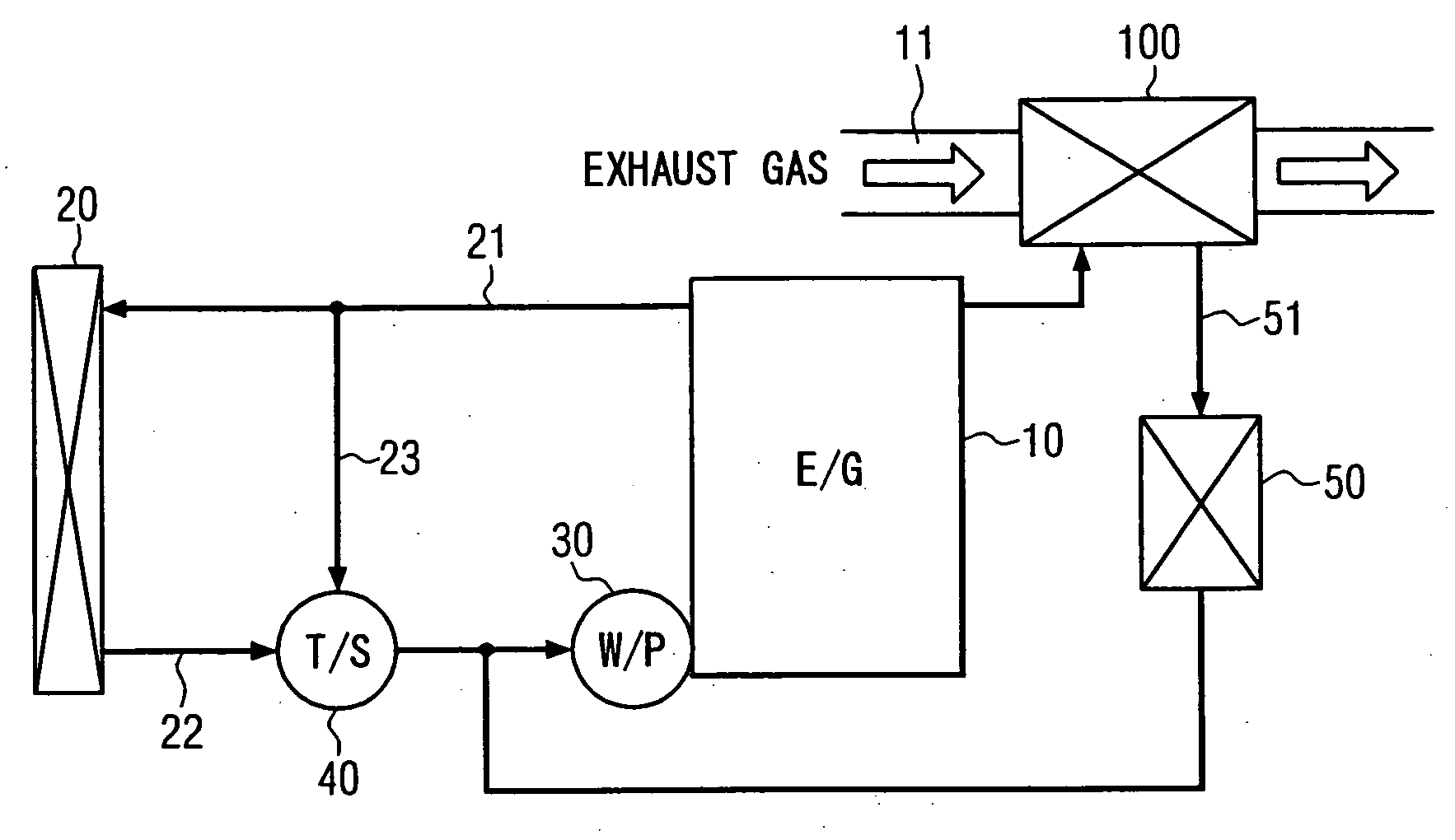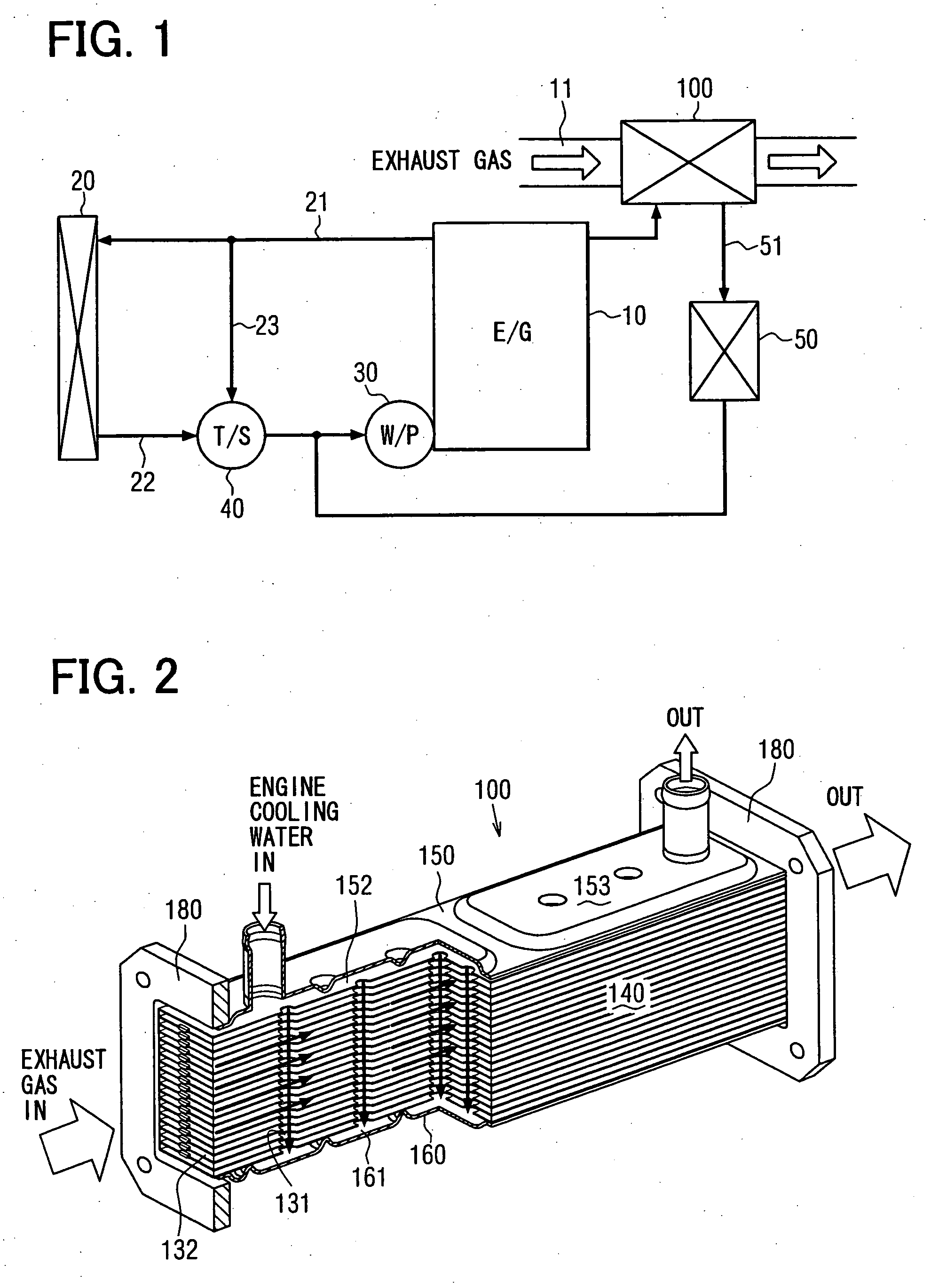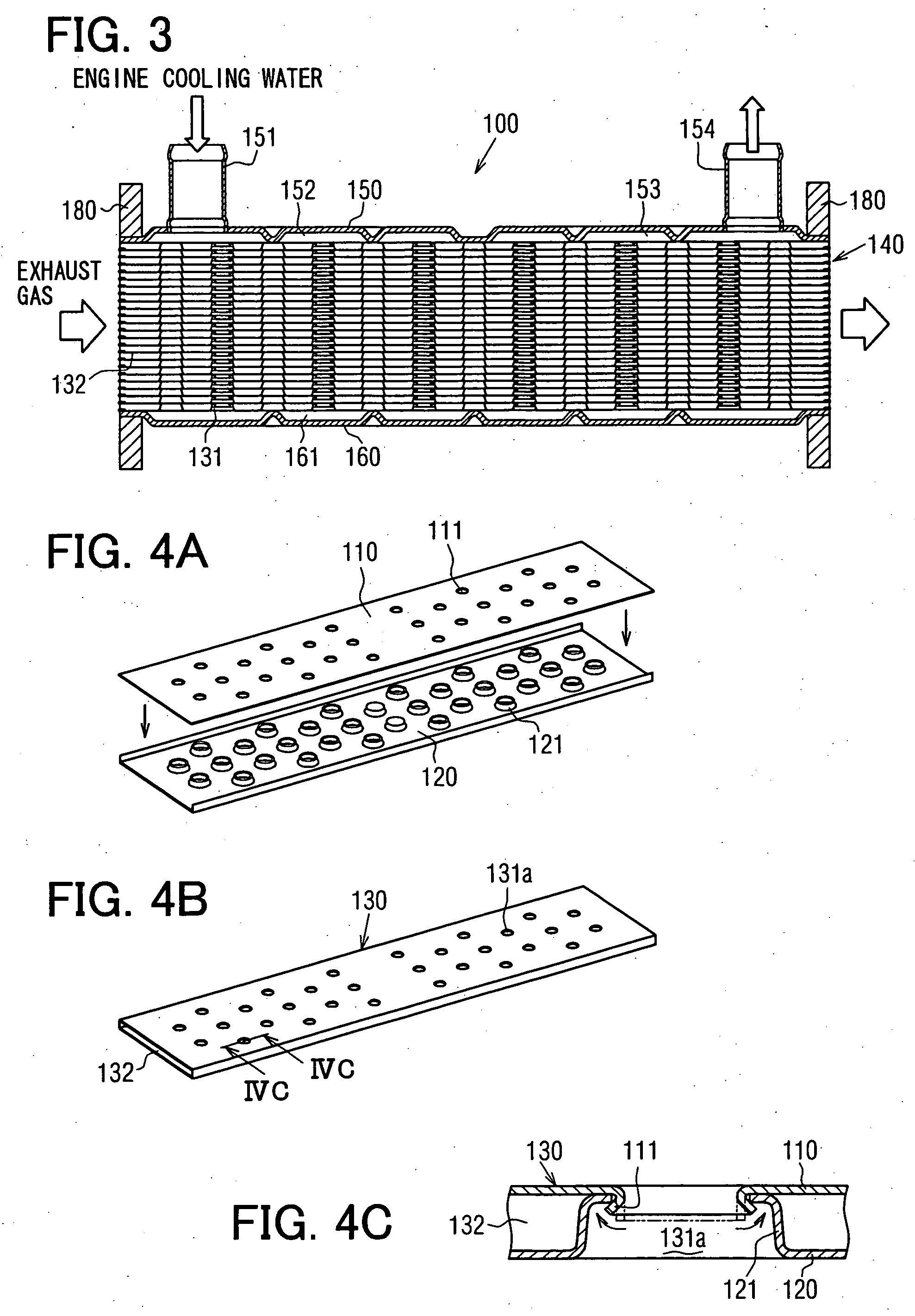Exhaust gas heat exchanger
a heat exchanger and exhaust gas technology, applied in the direction of lighting and heating apparatus, machines/engines, laminated elements, etc., can solve the problems of unavoidable cost increase, inability to easily increase and the heat exchange efficiency is much higher, so as to improve reduce manufacturing costs. , the effect of improving the efficiency of heat exchang
- Summary
- Abstract
- Description
- Claims
- Application Information
AI Technical Summary
Benefits of technology
Problems solved by technology
Method used
Image
Examples
first embodiment
(First Embodiment)
[0051] Embodiments of the present invention will be disclosed hereinafter with reference to the accompanying drawings. FIG. 1 is a schematic diagram showing a system structure of a heat exchanging apparatus for a liquid-cooled internal combustion engine. A water-cooled gasoline engine 10 used for an automotive vehicle (referred to as an engine hereinafter), as one of liquid-cooled internal combustion engines, is connected with a radiator 20 by way of an inlet pass 21 and a return pass 22, wherein the radiator carries out heat exchange between coolant (engine cooling water) for cooling the engine 10 and surrounding air.
[0052] More specifically, one side (upstream side) of the inlet pass 21 is connected with a cylinder head of the engine 10, and the other side (downstream side) thereof is connected with an inlet port of the radiator 20. One side (upstream side) of the return pass 22 is connected with an outlet port of the radiator 20, and the other side (downstream ...
first modification
(First Modification)
[0076]FIG. 8A is an oblique view of a first modification of the tube 130, and FIG. 8B is a cross sectional view taken along a line VIIIB-VIIIB in FIG. 8A. This modification differs from the first embodiment in that multiple rectangular projections (fins) 113a are formed in the tube plate 110, as shown in FIGS. 8A and 8B. With such a structure, a heat receiving area for receiving heat from the exhaust gas is increased, so that heat exchange efficiency (heating of the coolant, and cooling of the exhaust gas) between the coolant and the exhaust gas can be improved.
[0077] Since the rectangular projections 113a are integrally formed in the tube plate 110, a number of parts is not increased to thereby suppress the cost increase. The rectangular projections 113a are formed by cutting and bending respective portions of the sheet material for the tube plate 110, wherein the portions are located between the coolant flow pass holes 131a and the rectangular projections 113 ...
second modification
(Second Modification)
[0078]FIG. 9 is an oblique view of a second modification of the tube 130, which differs from the first modification in that multiple triangular projections (fins) 113b are formed in the tube plate 110. With such a structure, soot is prevented from piling up at fin portions (projections 113b) in addition to the increase of the heat exchange efficiency.
PUM
 Login to View More
Login to View More Abstract
Description
Claims
Application Information
 Login to View More
Login to View More - R&D
- Intellectual Property
- Life Sciences
- Materials
- Tech Scout
- Unparalleled Data Quality
- Higher Quality Content
- 60% Fewer Hallucinations
Browse by: Latest US Patents, China's latest patents, Technical Efficacy Thesaurus, Application Domain, Technology Topic, Popular Technical Reports.
© 2025 PatSnap. All rights reserved.Legal|Privacy policy|Modern Slavery Act Transparency Statement|Sitemap|About US| Contact US: help@patsnap.com



